General Relativity Rules: Einstein Victorious In Unprecedented Gravitational Redshift Test
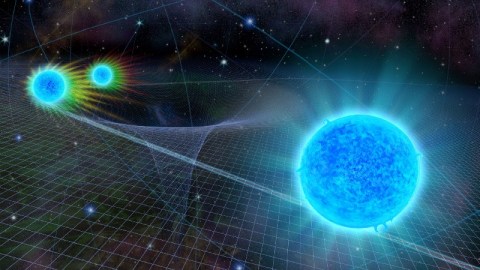
A star orbiting past our galaxy’s supermassive black hole offered a chance to test relativity as never before.
The supermassive black hole at the center of the Milky Way is the most extreme astrophysical object located within a million light-years of Earth. With an estimated four million solar masses, it’s the largest black hole in our galaxy and second largest, behind Andromeda’s, in the entire Local Group. If your goal is to probe Einstein’s theory of General Relativity more stringently than ever before, the environment around this black hole is the best testing ground provided by nature.
Since 1995, a team of astronomers led by Andrea Ghez at UCLA has been studying the orbits of stars near the galactic center. As time has progressed, their observational tools and techniques have improved. In 2018, the closest orbiting star to our supermassive black hole, S0–2, made its closest approach, reaching 2.7% the speed of light. In a tremendous new result, Einstein’s theory has been confirmed as never before. Here’s how.
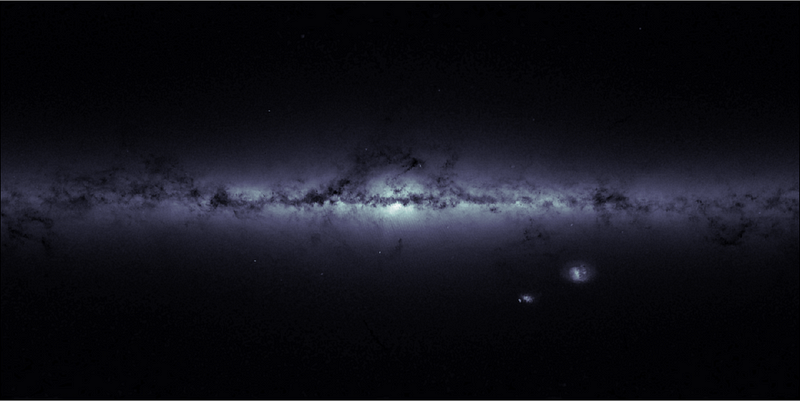
The galactic center itself is an extraordinarily difficult place to observe. Located 25,000 light-years away, observers on Earth have to look directly through the plane of the Milky Way in order to visually measure the central region of the galaxy, a task made enormously difficult by the presence of interstellar dust. This intervening material can been seen as dark bands strewn across the Milky Way, even with the naked eye.
However, these dust grains are of a finite size, and while visible light is easily absorbed by them, light of a longer wavelength can pass through that dust unimpeded. If we look in infrared light, suddenly our view of the galactic center opens up, and we can even see the individual stars moving around. When we examine the galactic center, we see that they all make an elliptical orbit around a single point that emits no light: our galaxy’s supermassive black hole.
Even though we’ve had large, ground-based telescopes with infrared instruments for decades, the sheer density of stars near the galactic center made resolving them an impossible tasks. It was only through the twin techniques of speckle interferometry and adaptive optics that the stars themselves began to be revealed.
The atmosphere itself introduces effects that distort the light reaching the optics of any telescope, from turbulent airflow to molecules that absorb or refract light to charged particles that affect light based on its polarization. By taking large numbers of very short exposures, the time-varying effects of turbulence can be greatly reduced, transforming a point source that appears to be a speckled mess back into a point source. The computer processing required to make this technique of speckle interferometry a reality was prohibitive throughout much of the 1970s and 80s, but was routine by the early 2000s.

The second advance, in adaptive optics, brought us even farther. In principle, a telescope is only limited in resolution by the number of wavelengths of light that can fit across its primary mirror. Make your mirror twice as large, or your light wavelengths half the size, and you’ll double your resolution. This is a piece of cake in space, but with the atmosphere involved, distortion means that practically, you’ll never achieve that ideal resolution.
Adaptive optics changes all of that. By either splitting or making a copy of the incoming light, you can take one copy and delay it, while the other is used in conjunction with a known point source to calculate the effects of the atmosphere, and the mirror shape needed to un-distort that light. By then adapting the mirror to the proper shape necessary to restore the light to its pre-atmospheric effects, the other copy then strikes the adaptive mirror, producing a ground-based image with space-based quality.
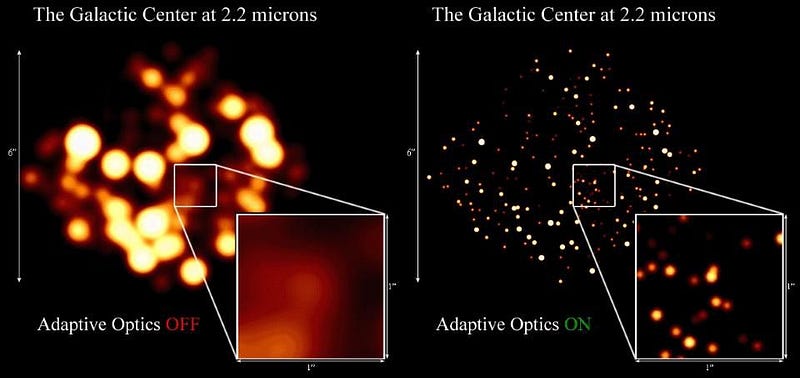
These techniques have been around for decades, but they’ve seen significant improvements throughout the 21st century. Right alongside them, new instruments have been built to extract even more and higher-quality data out of the collected light.
The Ghez group at UCLA was first able to image, resolve, and accurately identify the positions of faint, individual stars at the galactic center beginning in 1995. Initially, only a few stars were visible, but as time progressed, more and more stars became visible and trackable. As the Ghez group began to collect better data, they inferred the necessary mass required to create those orbits: a black hole of approximately 4 million solar masses. As an even greater boon, they started noticing that a few of the stars passed extremely close to the supermassive black hole, setting up an incredible opportunity.
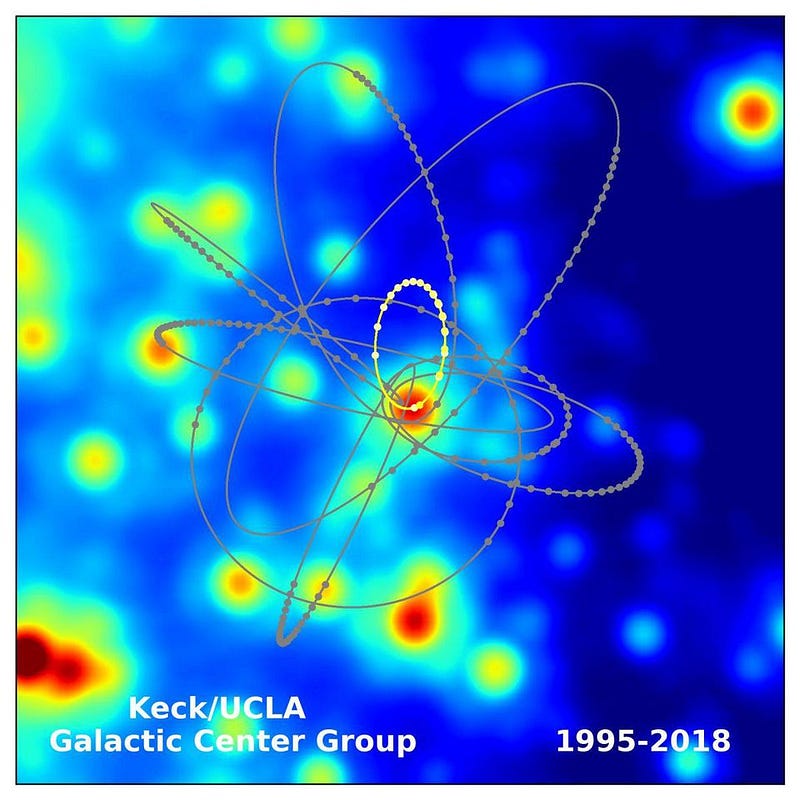
The closest star of all was one of the earliest ones discovered by the Ghez group when examining the galactic center: S0–2. (This is out of approximately 100 resolved stars in the galactic center, overall.) At its closest, S0–2 comes within just 18 billion kilometers of the event horizon of Sagittarius A*, which is only about twice the diameter of Neptune’s orbit around the Sun.
The first close approach of S0–2 to Sagittarius A* occurred in 2002, back when the technology was still rapidly improving. But with a mere 16 year orbit, astronomers already started planning for the next big event: in May of 2018. During closest approach, S0–2 would move at its most rapid speed: approximately 2.7% the speed of light. But what would be even more significant would be the effects of severely curved space around the black hole, which leads to a number of fascinating effects in General Relativity.
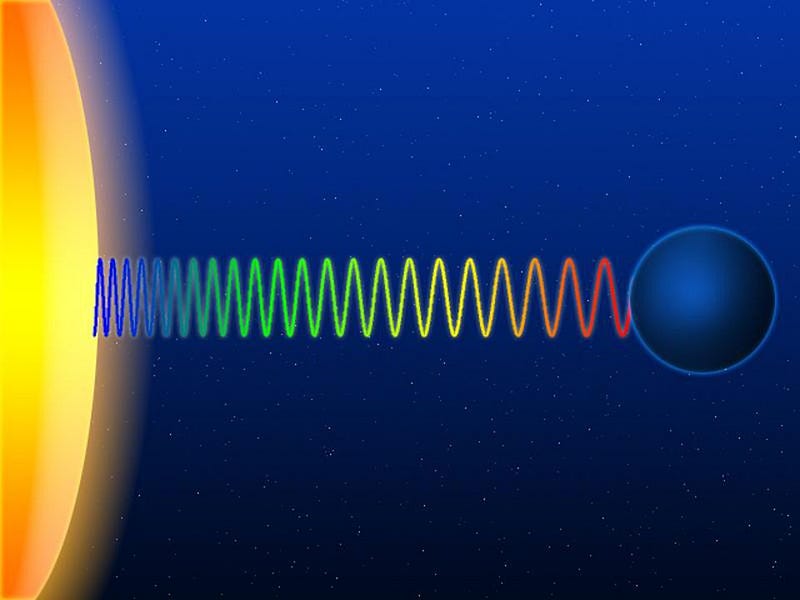
Perhaps the biggest prediction that would be tested in this extreme environment is that of gravitational redshift: the idea that photons emitted from deep within a gravitational potential well will have to lose energy in order to escape from this region of significantly curved space. General Relativity makes very specific predictions, based on the curvature of space in a region where the matter is located, for how significantly the light emitted by an object should be systematically shifted towards longer wavelengths and lower energies.
At these very large speeds and with a specific orientation with respect to our line-of-sight, scientists would need to combine both special relativistic effects due to the star’s motion with the general relativistic effect of curved space in order to extract predictions for the redshift that they’d measure during the critical time.
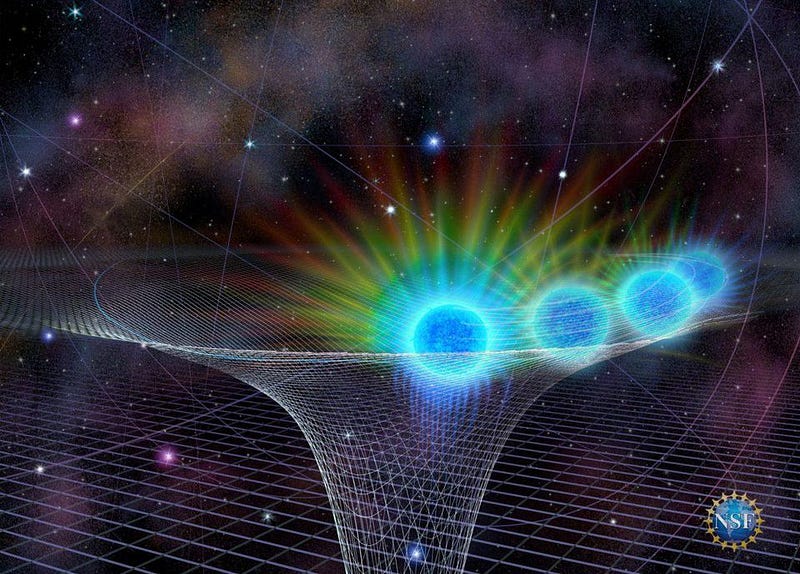
But gravitational redshift isn’t the only prediction of relativity that this close approach of S0–2 to Sagittarius A* will test. In addition, the fast-moving star moving through this severely curved space should receive a slight kick to its orbit.
Just as Mercury’s perihelion precesses around the Sun due to General Relativity, S0–2 should similarly precess around this supermassive black hole, except with a much larger effect. In Newtonian gravity, for instance, a mass like S0–2 should make a perfectly closed ellipse in its orbit around a black hole, whereas in Einstein’s gravity, there should be a measurable change in the shape of that ellipse after a close pass by the black hole.
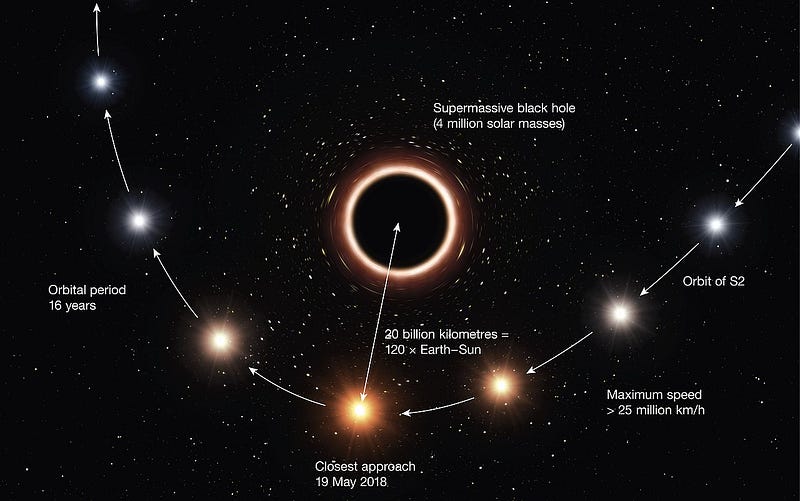
Last year, the GRAVITY collaboration, using a new, state-of-the-art interferometer aboard the Very Large Telescope that was specialized for near-infrared observations, was able to measure an effect of gravitational redshift that was inconsistent with Newtonian dynamics alone. With subsequent, improved data, scientists hoped to not just disfavor Newton’s theory even farther in a relativistic regime, but to put Einstein to an entirely new, unprecedented test.
Well, the Ghez group has done it.
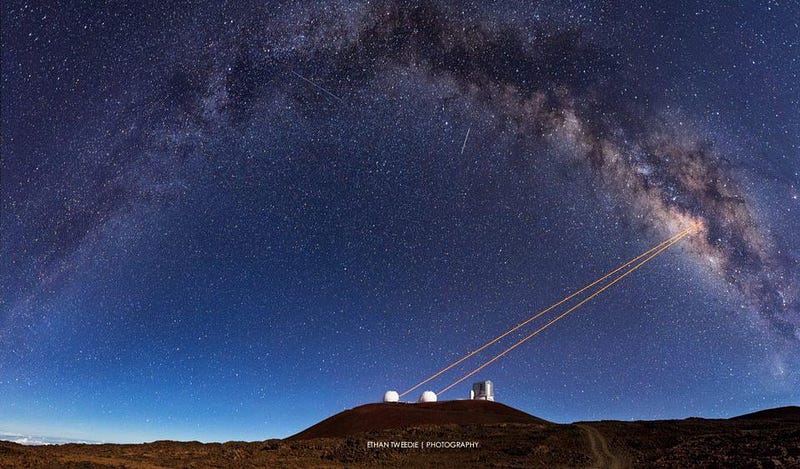
In a culmination of an observational campaign that’s spanned the last 25 years, they added a series of measurements taken from March through September of 2018 to the existing data from 1995–2017, including the moment of closest approach in May of 2018. Their results, published today in Science, yield three brand new results.
The first was that the gravitational redshift of S0–2 was measured, and was found to be consistent with Einstein’s predictions within 1-sigma uncertainties, while Newton’s results were excluded at greater than 5-sigma significance. This is, on its own, a gold-standard confirmation of Einstein’s General Relativity in an entirely new regime.
But this also yields the most accurate determination for the mass of and the distance to Sagittarius A*: the black hole at the Milky Way’s center. The new estimates are as follows:
- Mass = 3,946,000 solar masses, with an uncertainty of 1.3%, and
- a distance of 7,946 parsecs (25,900 light-years), with an uncertainty of only 0.7%.
This is the most knowledge we’ve ever had about relativity, our galactic center, and stars that orbit in severely curved spaces.
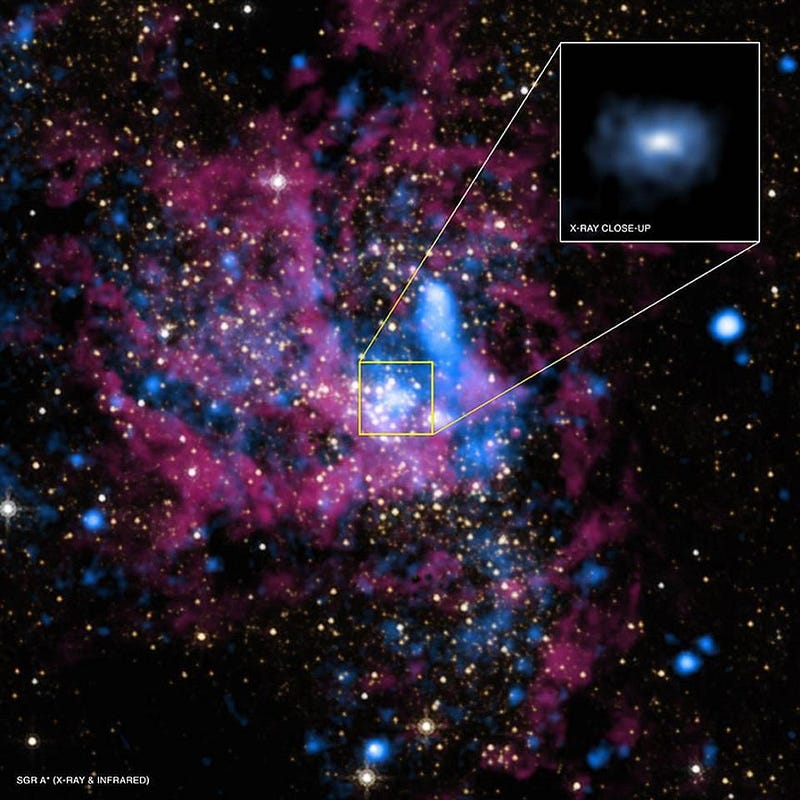
The most interesting part of this result is that it clearly demonstrates the purely General Relativistic effect of gravitational redshift. The observations of S0–2 showcase an exact agreement with Einstein’s predictions, within the measurement uncertainties. When Einstein first conceived of General Relativity, he did so conceptually: with the idea that acceleration and gravitation were indistinguishable to an observer.
With the validation of Einstein’s predictions for the orbit of this star around the galactic center’s black hole, scientists have affirmed the equivalence principle, thereby ruling out or constraining alternative theories of gravity that violate this cornerstone of Einsteinian gravity. Gravitational redshifts have never been measured in environments where gravity is this strong, marking another first and another victory for Einstein. Even in the strongest environment ever probed, the predictions of General Relativity have yet to lead us astray.
Ethan Siegel is the author of Beyond the Galaxy and Treknology. You can pre-order his third book, currently in development: the Encyclopaedia Cosmologica.





